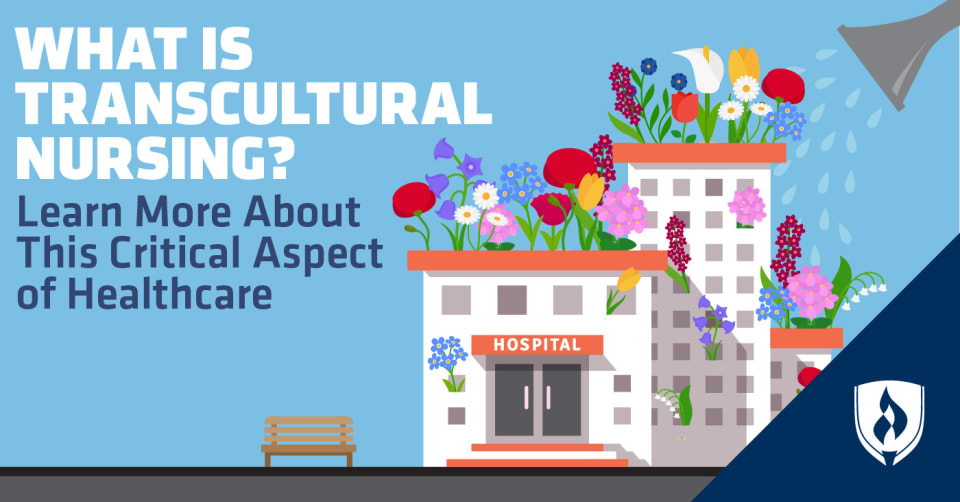What is Transcultural Nursing? Learn More About This Critical Aspect of Healthcare
By Jess Scherman on 03/08/2017

The American population is currently more diverse than it has ever been, and it is predicted that the country will become even more racially and ethnically diverse in the coming years, according to the U.S. Census Bureau.
In fact, the U.S. is projected to become a majority-minority nation for the first time in the year 2043, which means that non-Hispanic whites will make up less than 50 percent of the population. It is also true that the number of people who identify as belonging to two or more races will triple—from 7.5 million to 26.7 million—by 2060.
The growth of minority populations in tandem with growing healthcare disparities across the nation reflect the importance of recruiting and retaining a diverse healthcare workforce. With a national ratio of 854 nurses per 100,000 people reported in 2008—while also taking into account the severe nursing shortage we’ve experienced since then—it has become increasingly crucial to nurture a more diverse, culturally competent nursing workforce.
That’s where transcultural nursing comes in.
Join us as we explore the definition of transcultural nursing, the need for increased cultural competency in U.S. healthcare and the impact these will have on the future of nursing in our country.
They key to understanding transcultural nursing
Transcultural nursing is defined as a substantive area of nursing focused on cultural care values, beliefs and practices of individuals or groups of similar or different cultures. It is considered a cognitive specialty within nursing, which first originated by combining the “culture” construct of anthropology with the “care” construct of nursing. This was refined by Madeleine Leininger in 1975, who founded the Transcultural Nursing Society.
While it may not be a specialty for which nurses pursue additional education to receive certification (the way you might with specialties like nursing informatics, acute care nursing, pediatric nursing and others), it is an area of competency that is highly valued within today’s healthcare facilities.
With the population growing more diverse, it’s becoming more and more common for healthcare providers to treat patients whose cultural backgrounds differ from their own. One of the cornerstones of transcultural nursing is being aware of cultural trends while respecting the preferences of each individual patient.
Successfully implementing the tenets of transcultural nursing can result in overcoming barriers to communication that may otherwise stand in the way of providing patients with quality care. But this means much more than hiring qualified interpreters. Effective communication not only means understanding spoken languages, but also paying attention to body language and other cues, such as voice, tone and volume. The significance of these other cues can vary widely depending on culture.
Beyond the realms of communication, there are a number of other areas where nurses will need to attain specific levels of cultural competency to optimize care for all patients. These include having a base knowledge of propensity of certain diseases among various cultures; holidays and prohibited foods and beverages of specific religious groups; psychological and biological variations among varying cultures; and a culture’s relationship to the environment, which can impact receptivity to healthcare interventions.
What does this mean for the future of nursing?
So what does this call for transcultural competency mean for practicing nurses? Operating on the belief that quality healthcare can only occur within the patient’s cultural context and that embracing diversity among healthcare professionals will promote multicultural workplace harmony and minimize workplace conflict, it has been posed that the nursing workforce should renew its focus on diversity awareness.
Diversity awareness, according to the National Student Nurses Association (NSNA), refers to a conscious and ongoing process in which we identify similarities and differences within and between varying cultural groups. This necessitates an environment of cultural sharing among patients and healthcare professionals, which in turn maximizes health outcomes for all involved.
Conversely, a lack of diversity awareness can result in providing culturally incongruent nursing care, which adversely impacts patient outcomes and can even jeopardize patient safety in certain cases. For example, nurses must be culturally competent to recognize—or ask the questions necessary to help them discover—when “folk medicine” use may impact patient treatment. This can help avoid dangerous patient outcomes, such as drug toxicity when certain medicines are used in conjunction with herbal remedies.
While this outcome might sound far-fetched on the surface, there have been a number of malpractice cases of this kind that arose from issues involving cultural incompetence.
With all of this in mind, we will likely see a rise in cultural competence education for nurses and other healthcare professionals. For new nursing graduates looking to enter the field, it can be helpful to be proactive in learning more about cultural competence in healthcare, whether by signing up for a relevant class or volunteering in culturally diverse healthcare settings.
As for more visible changes to the nursing workforce, it’s true that nursing leaders recognize the strong connection that exists between a culturally diverse nursing workforce and quality, culturally competent care, according to the American Association of Colleges of Nursing (AACN). This will result in continued efforts to recruit a graduating nursing workforce that more closely mirrors the diverse patient population. You can expect nursing programs to direct their efforts toward attracting and retaining students from underrepresented groups in nursing.
You can learn more about the efforts being put into place and the statistics that support them by visiting the AACN’s fact sheet on enhancing diversity in the workforce.
Can you contribute to a more culturally competent nursing workforce?
The face of the average American has rapidly changed over the years, and it will continue to do so as our nation progresses. With similar changes in our nursing workforce, you can expect new nursing graduates to be armed with an abundant knowledge base of cultural competency and diversity in healthcare.
Pursing a Bachelor’s degree in Nursing could hold the key to your achieving the educational cornerstones of becoming the culturally competent nurse that healthcare facilities are looking for. Learn more about the benefits of earning a BSN on an accelerated educational track or—if you’ve already reached RN status—making the jump from RN to BSN to enhance your healthcare repertoire. You could be on your way to contributing to the new faces of nursing in no time.
RELATED ARTICLES:




